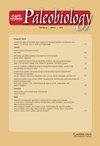勃列茨基层次结构、多尺度异体结构和地球生物群--进化事物的本质
摘要
进化过程及其产生的结构最好从等级理论来理解。传统上,生物区系是通过林奈谱系层次或群落或生态系统的经济层次来描述的。在这里,我们描述的是布雷茨基等级体系--一种混合的生态-系谱学等级体系,由嵌套的不同大小、通常由相互作用的个体组成的多型群落组成,这些群落在空间和时间上与其他此类群落在多个尺度上相互分离。布雷茨基等级体系由同时具有系谱学和经济学属性和功能的元素组成--介于经济学等级体系(弗纳兹基)和系谱学等级体系(林奈)之间,并连接两者的元素。在较低层次上,所描述的层次结构是由全生物体(holobionts)构成的,即由多个多单系生物组成的个体,这些多单系生物通过功能性相互作用或生物结构(如膜)整合在一起。在更大的空间层级和更长的时间尺度上,布雷茨基层次结构的成员具有更分散的性质,部分原因是我们作为更大和更持久结构(在此被描述为地球生物群)的观察者,体型较小,持续时间相对较短。它们的个体性是由外部强迫的,与我们星球的空间和时间物理结构直接相关。它们是亚生物群落和生物群落--生物群落的大型且有效隔离的时空结构,在内部通过共同进化而整合,在外部通过层层壁垒而个体化。盖亚在这里被理解为由地球外部空间分隔的最大的生态基因个体,并通过生物相互作用和生物群的板块构造混合在长时间尺度上整合在一起。障碍层次和多层次异生现象的存在表明,地理隔离不仅参与了物种谱系的个体化,还在多个空间和时间尺度上产生了由独立谱系组成的生物群落的连贯复合体。布雷茨基单元的大小、构型和持续时间与地球动力学直接相关,这表明物理星球在地球生物群的个体化和合并过程中,以及在多个时空尺度上控制共同进化及其所有影响的过程中发挥着核心作用。勃列茨基层次结构还允许将以前没有联系的主题--个体性的 "平等主义 "重大转变(如真核生成)和生命史上的一些巨型事件--整合到生态遗传学的空间和时间尺度的单一理论框架中。地球动力学过程的普遍缩放性以及地球动力学与布雷茨基单元动力学的直接联系,使我们能够对生物群进化过程中的时空偶然性和竞争性的尺度和极限提出猜想。The process of evolution and the structures it produces are best understood in the light of hierarchy theory. The biota traditionally is described by either the genealogical Linnaean hierarchy or economic hierarchies of communities or ecosystems. Here we describe the Bretskyan hierarchy—a hybrid eco-genealogical hierarchy that consists of nested sets of different-sized, usually polyphyletic communities of interacting individuals separated from other such communities in space and time at multiple scales. The Bretskyan hierarchy consists of elements that have both genealogical and economic properties and functions—situated between, and connecting the elements of, the economic hierarchies (Vernadskyan) and the genealogical (Linnaean) hierarchy. The described hierarchy at lower tiers is populated by holobionts, individuals composed of multiple polyphyletic lineages integrated by functional interactions or biotically fabricated structures, such as membranes. At larger spatial tiers and longer time scales, the members of the Bretskyan hierarchy are of a more diffuse nature, partially due to the small size and relatively short duration of us as observers of larger and longer-lasting structures, here described as geobiomes. Their individuality is externally forced and directly tied to the spatial and temporal physical structures of our planet. These are sub-bioprovinces and bioprovinces—large and effectively isolated spatiotemporal structures of biota integrated internally by coevolution and individuated externally by a hierarchy of barriers. Gaia is here understood as the largest eco-genealogical individual compartmentalized by the outer space of the Earth and integrated at long time scales by biotic interactions and plate tectonic mixing of biota. The existence of a hierarchy of barriers and multilevel allopatry suggests that geographic isolation takes part not only in individuating species lineages, but also in producing coherent complexes of separate lineages forming bioprovinces at multiple space and time scales. The sizes, configurations, and durations of Bretskyan units are directly tied to geodynamics, demonstrating the central role of the physical planet in the processes of individuation and merging of geobiomes and the control of coevolution, and all its ramifications, at multiple space and time scales. The Bretskyan hierarchy also allows the integration of previously unconnected themes—“egalitarian” major transitions in individuality (e.g., eukaryogenesis) and some of the megatrajectories in the history of life—into a single theoretical framework of spatial and temporal scaling of eco-genealogy. The pervasive scaling of geodynamical processes and the direct connection of geodynamics to the dynamics of Bretskyan units allows us to formulate conjectures on the scales and limits of spatial and temporal contingency and competitiveness of biotas in evolution.

 求助内容:
求助内容: 应助结果提醒方式:
应助结果提醒方式:


